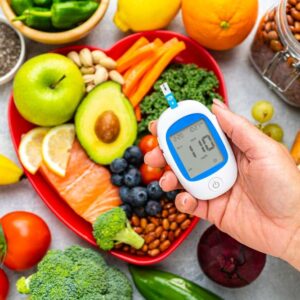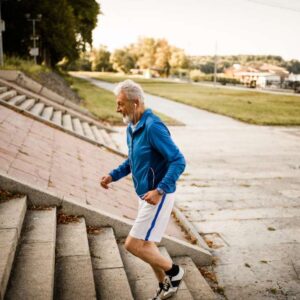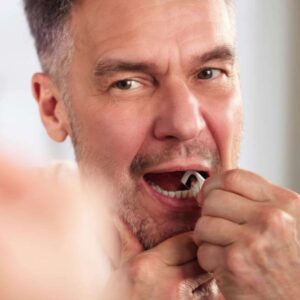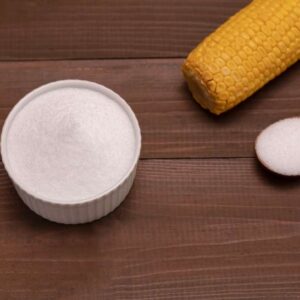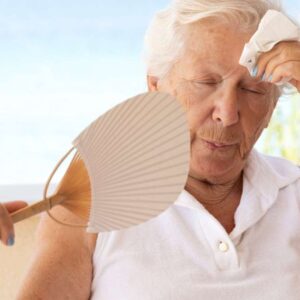
Are Your Windows Making You Sick?
- Winter weather isn’t the only culprit when it comes to catching the flu
- 93 percent of your time is spent in the wrong light
- A clear choice for boosting your immune system
Dear Reader,
“Ehh, it’s just a bit longer, nothing lasts forever… Plus, I have a window in my office, so I get plenty of sunlight — even when it’s cold outside. I should be fine.”
This is what I have been telling myself for the last few months.
Like many, I am counting down the days to March 20. This date marks the first day of spring for 2016 — but more importantly, the beginning of more sunshine, and warmer weather.
However, the most significant benefit of the equinox, for me anyways, is the ability to naturally increase my vitamin D levels.
Since, as you may already know, one of the easiest ways to increase vitamin D levels is through natural sun exposure. Sadly, these short, cold, and dark days of winter haven’t provided many sunny opportunities.
But I always assumed that the sunlight shining through the windows in my car, office, and apartment was helping to increase my vitamin D levels.
As it turns out — I was totally wrong.
In fact, the sunlight from windows does more harm than good — and not just to your vitamin D levels.
We will explore the health dangers of window sun exposures — including what it can mean for your health during the cold and flu season.
And later I will explain how to keep your vitamin D levels in check during the winter, as well as the rest of the year.
First, let’s talk about the production of vitamin D and the potential dangers shining through our windows.
![]() Dangerous Rays
Dangerous Rays
Vitamin D is a fat-soluble steroid hormone.1 Vitamin D3, specifically, is the natural D vitamin your body produces through sunlight exposure. Vitamin D3 forms in the skin when ultraviolet B (UVB) light from the sun is present.2
When UVB light touches your skins, a cholesterol found in your skin turns into vitamin D3 and it’s released into the bloodstream and sent to the liver for further processing.3 UVB rays are the reason sunshine is so often the natural prescription for a healthy vitamin D3 level.
And while UVB in small doses helps vitamin D3 production, too much UVB can be a bad thing.
UVB is the type of light responsible for sunburns and plays an important role in skin cancer development and has a hand in sun-aging.
Unfortunately, UVB is not the only ultraviolet light you absorb during sun exposure.
In addition to the vitamin D3-boosting UVB rays, you are also receiving a dose of ultraviolet A (UVA) light (the rays that cause skin tanning) — and at a much higher level.
This is due to UVA rays making up 95 percent of the UV radiation that reaches the Earth’s surface and being 30–50 times more prevalent than UVB rays.
Another factor that makes UVA rays more intense than UVB rays is that UVA rays are present year-round in equal intensity during daylight hours, and can even penetrate clouds and glass. UVB rays are only present for a certain window of daylight hours, depending on the season.
Also, UVA rays penetrate the skin at a deeper levels than UVB rays. Due to this, they can increase skin wrinkling and aging.
But that is not the worst news about UVA rays. Over the past two decades, more and more evidence indicates that UVA rays can damage cells found in the top layer of the skin, the epidermis. This is the layer where most skin cancers occur.4,5
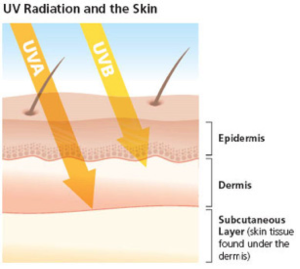
Photo credit: skincancer.org
And to further the winter light issue, most Americans don’t get their sun exposure from the outdoors. Instead, they rely on the windows in their homes, offices, and cars to provide their daily rays.
In fact, according to the EPA, Americans spend 93 percent of their lives indoors, 87 percent in a building, and 6 percent in a car.6
This means you are getting a majority of your light exposure through glass, regardless of the season.
At this point, you may be wondering why this is such a problem? Any light is better than none, right?
Wrong.
The problem is most windows filter out only UVB rays, not UVA.
So every time you are exposed to sunlight through a window, you are getting a big dose of wrinkle-creating, cancer-causing UVA light and zero vitamin D3-boosting UVB.
And while this is very disturbing news, the effects of a vitamin D3 deficiency are just as devastating, especially in the wintertime.
![]() Your Body Needs Vitamin D
Your Body Needs Vitamin D
As you may have already heard, vitamin D is essential for many functions in the body, including bone health and the prevention of osteoporosis.
However, in more recent years, it has become clear that vitamin D plays a key role in immune functions. Studies have shown that those with low levels of vitamin D have a greater risk of developing influenza.7
Vitamin D helps boost immunity by raising levels of naturally occurring antibiotics and lowering levels of inflammatory proteins called cytokines.7 This increase in natural antibiotics will help to fight off invading viruses and germs, plus the decrease of inflammation may help your immune system fight off infections more effectively.
A study in JAMA Internal Medicine found that folks with the lowest vitamin D blood levels reported having considerably more recent cases of the flu or colds.
Dr. Adit Ginde, head author of the study reported, “The findings of our study support an important role for vitamin D in prevention of common respiratory infections, such as colds and the flu. Individuals with common lung diseases, such as asthma or emphysema, may be particularly susceptible to respiratory infections from vitamin D deficiency.” 8
Also, winter is when influenza epidemics occur. This makes it crucial to have a healthy vitamin D level for a strong immune system.
Ten–15 minutes of sunshine without sunscreen is the recommended practice to keep your vitamin D levels in check.9
However, getting outdoor sun exposure during the wintertime (or anytime, for that matter) is not a reliable option for many people. And since most windows don’t provide adequate sunlight, supplementation is the clear and likely most effective choice for maintaining your vitamin D levels.
In addition, when you are looking for a vitamin D supplement, be sure your choice is an oil-based softgel. Olive oil is the best type, if available. Some supplement manufacturers use soybean oil, which may be a GMO ingredient.
Also be sure that the soft gel casing doesn’t contain GMO ingredients.
If you have anything you would like to share about vitamin D, please do! nmoore@lfb.org
Live Well,

Natalie Moore
Managing editor, Living Well Daily
P.S. Wednesday, we gave readers a sneak peek at our Living Well Daily Insider letter. As you can see, the bonus content is full of added tips and tricks to help you on your quest for better health. If you are interested in signing up for the insider, call customer service at (844) 266-2089.
Sources
[1] Vitamin D: A Hormone for All Seasons – How much is enough? Understanding the New Pressures
[2] How do I get the vitamin D my body needs?
[3] Vitamin D & the Sun: What does the sun do for me?
[5] Watch Out for Skin Cancers and Photoaging on the Left Side of Your Body
[7] Influenza
[9] Vitamin D
[10] Vitamin D
Written By Natalie Moore
Natalie Moore is a dedicated health researcher with a passion for finding healthy, natural, and science-based solutions. After a decade of direct healthcare experience in western and natural medicine, she was involved in public health research before joining Living Well Daily.
View More Free Articles
Stop Obsessing Over Diet Trends
Can we stop with the endless diet debates already? Every other week there’s a new headline shouting about which diet is best for weight loss, heart health, or diabetes. Paleo, keto, low-carb, high-protein… it’s exhausting. And now, a new meta-analysis is out comparing the Mediterranean diet, the DASH diet, and something called AHEI (that’s “Alternative...
A New Reason to Ditch Processed Junk
If you’ve ever walked the inside aisles of your local grocery store and thought, “This is all just junk,” your instincts were spot on. A new study published in the journal Thorax just added another red flag to the list of dangers linked to ultra-processed food—a 41 percent higher risk of lung cancer. That’s right....
When Being Winded on Stairs Is Serious (And When It Isn’t)
I had an athlete visit me recently because he experienced shortness of breath while climbing stairs. He is in great shape, so he was worried about what it might mean. “Doc,” he said, “I run five miles three times a week. Why am I huffing and puffing after two flights of stairs?” His concern is...
Study EXPOSES Hidden Danger Lurking in Your Car
We think of our homes and cars as safe havens. But according to a startling new study, they may be flooding your lungs with microscopic plastic particles—every single day. Researchers in France recently found that adults inhale an average of 68,000 microplastic particles daily from indoor air alone. To put that in perspective, that’s about...
Mailbag: Is Modern Food Making You Snore?
“What can cause snoring, and is there a way to correct this issue?” —Seeking Silence Hi Seeking, Snoring happens when the soft tissues in your throat relax and vibrate as air passes through during sleep. While several factors can cause snoring—from sleep position to nasal congestion—I want to share one trigger that might surprise you....
Simple Food Swap SLASHES Dementia Risk 28%
Let’s be honest… who would jump at the chance to cut their dementia risk by 28 percent. And no, you don’t need to run marathons, survive on broccoli, or learn to play the zither (whatever that is) to make it happen. All it takes is one easy swap—something that’s probably already in your refrigerator. Researchers...
This SMART Floss Exposes Hidden Health Danger
Scientists have created dental floss that doesn’t just clean between your teeth—it also tracks your stress while you’re flossing. Now, I know what you’re thinking… “Great—now even flossing is going to stress me out by telling me how stressed I am.” But this fascinating new tool from Tufts University could be a game-changer for understanding...
Is This "Safe" Sweetener Damaging Your Brain?
The headlines are alarming… “Popular Sugar Substitute Linked to Brain Cell Damage” and “Erythritol Could Damage Critical Brain Barrier” are just two of the dozens I’ve spotted recently. But before you toss every sugar-free product in your pantry, let’s take a closer look at what this study actually shows—and what it doesn’t. The latest research...
This Summer Threat Could SPIKE Your Blood Sugar
Picture this… It’s another scorching hot summer day. You crank up the air conditioning while watching the weather forecast, which predicts yet another “record-breaking” heat wave. It’s starting to feel like just another miserably uncomfortable summer. But what you might not realize is that—if you have diabetes—those rising temps could do far more damage to...
Move Over Yogurt—5 Foods That Pack MORE Probiotics
Let’s talk about your gut. The microbiome is the collection of trillions of bacteria and other tiny organisms that live in and on your body—especially in your gut—and help keep you healthy. I’ve written often about how vital it is to maintain a healthy microbiome. And you might have dutifully added yogurt to your shopping...
